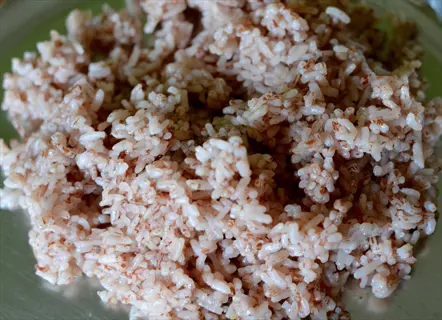Top 10 Selenium Rich Foods

Written by
Gina Mason
Reviewed by
Prof. Benjamin Murphy, Ph.D.Brazil nuts lead the list of selenium rich foods, providing 544 mcg per ounce.
Just one Brazil nut or a 3oz serving of tuna, will meet your daily selenium needs.
To maximize selenium content, steam or grill foods instead of boiling them.
Take better advantage of plant-based selenium by combining them with vitamin-C sources.
Be cautious about eating Brazil nuts, as they may pose toxicity risks; recommended intake is 1-2 Brazilian nuts per day.
The quality of soil can affect the selenium levels of plant-based sources.
Article Navigation
Include selenium-rich foods in your diet to support your thyroid health and protect your body from cellular damage with antioxidants. This important mineral helps your body combat cellular damage. I check my clients' selenium levels first because low levels cause fatigue. Your thyroid's health and function depend on selenium.
Varying types of soil influence the selenium content in foodstuffs. Those foodstuffs that are grown in soil deficient in selenium are weak in this mineral. No matter whether we are vegans or eat meat, we must consider different areas. My advice to the foe is to find out the place of origin that has the most to recommend it, regarding minerals.
We will investigate the best sources, such as seafood and Brazil nuts. You will learn practical ways to incorporate them into your daily life. Understanding portion size can prevent both deficiency and toxicity. These foods will help all people, from athletes to busy parents.
Top 10 Selenium Rich Foods
Brazil nuts lead a list of foods high in selenium, providing 544 micrograms in each ounce. Just one nut provides your required daily amount. The 3 oz of tuna gives you 92 micrograms in comparison. Both are wonderful for thyroid support. I often recommend these foundational sources of selenium.
The vegan sources of these nutrients are the mushrooms, which give you 13 micrograms if you eat ½ cup, and brown rice, which provides 12 micrograms per cooked cup of rice, making its use in stir fries and grain bowls desirable. One must also exercise portion control, especially with Brazil nuts, due to their high potency.
Cooking methods preserve selenium best. Steam rather than boil foods like mushrooms. Grill fish instead of boiling it in water. I learned this from nutrient testing. Correct preparation keeps up to 95% of selenium in foods.
Eggs, which provide 15 micrograms each, and sunflower seeds, which provide 18 micrograms per 3.5 ounces, are among the other excellent sources. Pork (chops) provides 43 micrograms per serving. Utilize these in conjunction with the others suggested above, if you want to be sure of continuous intake of selenium without monotony.

Brazil nuts
- Selenium Content: One ounce (28g) provides 544 micrograms, exceeding the daily adult requirement by nearly ten times
- Nutrition Profile: Rich in healthy monounsaturated fats, magnesium, and vitamin E for comprehensive health benefits
- Serving Tip: Limit to 1-2 nuts daily to avoid selenium toxicity while maintaining nutritional benefits
- Usage Idea: Chop and sprinkle over oatmeal or blend into homemade nut butter for selenium boost
- Storage Note: Keep refrigerated in airtight container to prevent rancidity due to high oil content
- Regional Variation: Selenium levels depend on Amazonian soil composition where trees grow naturally

Yellowfin tuna
- Selenium Content: Three ounce (85g) cooked portion delivers 92 micrograms of bioavailable selenium for daily needs
- Protein Quality: Provides complete protein with all essential amino acids for muscle maintenance and repair
- Omega-3 Bonus: Contains DHA and EPA fatty acids that support heart health and reduce inflammation
- Preparation Tip: Sear quickly over high heat to preserve nutrients and maintain tender texture
- Mercury Consideration: Choose smaller, younger fish to minimize mercury exposure while maximizing selenium
- Sustainability: Look for pole-caught or troll-caught options certified by marine stewardship organizations

Sardines
- Selenium Content: Three ounces (85g) canned in oil provide 45 micrograms of easily absorbed selenium
- Bone Health: Soft edible bones offer calcium and vitamin D for skeletal strength maintenance
- Convenience Factor: Ready-to-eat canned version makes nutrient-dense meals accessible without cooking
- Flavor Pairing: Combine with lemon juice and herbs to balance the distinctive savory taste
- Economic Value: Among most affordable seafood sources of selenium and omega-3 fatty acids
- Storage Life: Unopened cans last 2-3 years while retaining nutritional quality and flavor

Shrimp
- Selenium Content: Three ounce (85g) cooked serving contains 42 micrograms of highly bioavailable selenium
- Low-Calorie Protein: Provides lean protein source with minimal fat content for weight management
- Unique Antioxidant: Contains astaxanthin that gives pink color and enhances cellular protection
- Cooking Method: Steam or grill briefly to preserve delicate texture and nutrient profile
- Allergy Note: Common allergen requiring caution for those with shellfish sensitivities or allergies
- Sustainability: Choose farmed varieties certified by aquaculture stewardship organizations

Pork chops
- Selenium Content: Three ounce (85g) broiled portion offers 37 micrograms of selenium for daily needs
- Vitamin B Source: Rich in thiamin that supports energy metabolism and nervous system function
- Cut Selection: Choose center-cut loin for leanest option with minimal saturated fat content
- Cooking Tip: Use meat thermometer to reach safe 145°F (63°C) without overcooking and drying
- Marinade Advantage: Acidic marinades like vinegar or citrus tenderize while adding flavor
- Farm Practice: Pasture-raised pork may contain higher nutrient density than conventionally raised

Beef steak
- Selenium Content: Three ounce (85g) roasted portion provides 37 micrograms of well-absorbed selenium
- Iron Availability: Heme iron form offers highly absorbable iron for oxygen transport and energy
- Cut Variation: Sirloin and round cuts provide lean protein with minimal marbled fat content
- Cooking Method: Reverse searing technique ensures even doneness while preserving moisture content
- Nutrient Synergy: Pair with vitamin C-rich vegetables to enhance iron absorption from meat
- Grass-Fed Benefit: May contain higher omega-3 content than grain-finished beef alternatives

Cottage cheese
- Selenium Content: One cup (226g/8oz) delivers 20 micrograms of selenium with slow-digesting protein
- Calcium Source: Provides bone-strengthening calcium in bioavailable form for all ages
- Texture Options: Available in small-curd or large-curd varieties with differing cream content
- Meal Versatility: Works in sweet applications with fruit or savory dishes with herbs
- Probiotic Potential: Some brands add live cultures for digestive health enhancement
- Storage Tip: Keep refrigerated and consume within 5-7 days after opening for freshness

Eggs
- Selenium Content: One large hard-boiled egg (50g) offers 15 micrograms of highly bioavailable selenium
- Choline Richness: Excellent source of choline for brain health and liver function support
- Lutein Source: Contains eye-protective antioxidants in the yolk that combat blue light damage
- Cooking Note: Gentle boiling preserves nutrients better than high-temperature frying methods
- Freshness Test: Submerge in water - fresh eggs sink while older ones float to top
- Color Myth: Shell color indicates breed not nutritional quality or selenium content

Brown rice
- Selenium Content: One cup cooked (195g) provides 12 micrograms plus fiber for digestive health
- Whole Grain Benefit: Retains bran and germ layers containing B vitamins and minerals
- Glycemic Advantage: Lower glycemic impact than white rice for blood sugar management
- Cooking Tip: Soak before cooking to reduce phytic acid and improve mineral absorption
- Arsenic Consideration: Rinse thoroughly before cooking to reduce inorganic arsenic content by 30%
- Versatility: Base for bowls, stir-fries or pilafs absorbing flavors while adding nutrients

Portabella mushrooms
- Selenium Content: Half-cup grilled portion (60g) supplies 13 micrograms of plant-based selenium
- Umami Flavor: Provides meaty texture and savory taste for plant-forward dishes
- Vitamin D Potential: Develops significant vitamin D after 15-30 minutes of UV exposure
- Gill Removal: Scraping dark gills reduces bitterness in mature mushroom caps
- Cooking Method: Grilling or roasting intensifies flavor while preserving nutrient content
- Sustainability: Among most eco-friendly protein sources with low water requirements
Daily Selenium Requirements
The daily amount of selenium you need differs with age. The recommended dosage is 15 micrograms for infants, while adults require 55 micrograms per day. Pregnant women need a daily requirement of 60 micrograms. I provide measurements for these portions in both grams and ounces for your reference. One Brazil nut provides the recommended daily amount for an adult.
Toxicity risk begins at doses above 400 micrograms/ day. Eating four Brazil nuts would easily exceed the permissible dosage. Although there are limits with tuna, too, 3 oz of tuna gives 92 micrograms. Balance is the answer to avoid an overdose of selenium. I advise my clients to closely track their nut consumption.
Special considerations warrant discussion. Pregnant women need more selenium for fetal growth. Thyroid patients often require close monitoring. Kidney patients undergoing dialysis excrete selenium during the treatment process. Vegetarians should rely on mushrooms and fortified grains as a source of protein. Always consult your doctor to determine your individual needs.
Food equivalents help visualize the amount of food intake. Two eggs provide 30 micrograms, which covers half of your daily requirement. One cup of brown rice gives you 12 micrograms of folic acid. Sump that with sunflower seeds for a balanced overall picture. I work up meal plans based on these combinations.
Toxicity Threshold
- Safety Limit: 400 micrograms daily for adults prevents selenosis toxicity symptoms
- Brazil Nut Caution: Eating >4 nuts/day risks exceeding safe limits long-term
- Supplement Warning: High-dose supplements may cause nausea and hair loss
- Early Signs: Garlic-like breath and metallic taste indicate excess intake
Absorption Factors
- Digestive Impact: Gastrointestinal disorders may reduce selenium absorption
- Nutrient Partners: Vitamin C enhances selenium bioavailability from plant sources
- Inhibitors: High-fiber meals may decrease mineral absorption efficiency
Special Populations
- Dialysis Patients: Require monitoring due to altered mineral metabolism
- Vegans: Need intentional sourcing from Brazil nuts or fortified grains
- Smokers: Require higher intake to combat oxidative stress damage
Deficiency Symptoms
- Common Signs: Fatigue, brain fog, and weakened immunity indicate low selenium
- Physical Effects: Hair loss and brittle nails may develop gradually
- Severe Cases: Associated with thyroid dysfunction in high-risk groups
Plant-Based Selenium Sources
Plant-based selenium can vary widely with the quality of soils. Foods grown in selenium-rich soil have higher quantities of the mineral. Brazil nuts from the Amazon contain a significant amount of selenium. Mushrooms and grains will vary based on regional soils. I test food grown in various regions to ensure my clients receive optimal nutrition.
Vegan sources include common options like lentils and oatmeal. Lesser-known sources are sunflower seeds and fortified cereals. Brown rice provides a consistent source of selenium when sourced properly. I incorporate these into plant-focused meal plans for balanced nutrition.
Preparation matters when it comes to keeping nutrients intact. Steam mushrooms rather than boiling them. Lightly toast nuts at a temperature below 300 degrees to preserve selenium. Soak grains overnight to improve absorption. These methods will keep 95 percent (or higher) of the selenium in your meals.
Bioavailability differs in plants vs. animal products. Vegetables provide slightly lower absorption than seafood or egg foods. Therefore, herbal selenium should be taken with vitamin C-rich foods (such as bell peppers) to increase its effective assimilation in the body.
Soil Impact & Solutions
- Regional Variation: Selenium content varies 10-fold based on soil mineral levels
- Supplemented Crops: Some grains grown on selenium-enriched soils offer higher content
- Testing Option: Consider soil tests for home gardens to optimize selenium levels
Preparation Methods
- Cooking Tip: Steam mushrooms instead of boiling to prevent selenium leaching
- Soaking Benefit: Soak grains overnight to reduce phytic acid and improve absorption
- Pairing Strategy: Combine with vitamin C-rich foods to enhance selenium bioavailability
Vegan Considerations
- Primary Source: Brazil nuts provide concentrated selenium but require portion control
- Fortified Options: Cereals and plant milks add selenium for nutritional balance
- Legume Diversity: Include chickpeas and black beans along with lentils for variety
- Diversity Approach: Combine multiple plant sources to ensure adequate daily intake
Cooking & Absorption Tips
Selenium is found in all foods but is retained differently based on cooking methods. For example: fish should be grilled at 400° Fahrenheit to keep 90% of selenium. Vegetables should be steamed instead of boiled. Nuts should be lightly cooked below 300° Fahrenheit. These practices are necessary to prevent the loss of minerals. I teach these meals to clients so they can keep as much of their nutrients as possible.
Nutrient interactions are responsible for an effect on selenium. Vitamin C in the form of fruit helps the uptake of selenium in plants. Calcium in dairy is an antagonist of absorption when ingested. It is recommended to consume high-fiber foods separately from those rich in selenium. I develop charts on meal timing to optimize the effective use of minerals.
Importance of food combinations for Selenium. Eat Brazil nuts and oranges together. Grill mushrooms and eat with bell peppers. Add sunflower seeds to spinach salad. These combinations may be eaten on all diets. My clients have reported stronger energy patterns with these combinations of foods.
There are differences in the absorption of selenium depending on its source. Selenium from animal sources is absorbed 20% more effectively than from plant sources. Food combinations that utilize garlic or onions can be used to improve absorption. Fermented foods, such as tempeh, may aid in the absorption of nutrients in the body. These factors should be taken into consideration when preparing a diet strategy.
Absorption Boosters
- Vitamin C Pairing: Combine selenium-rich foods with citrus, bell peppers or broccoli
- Protein Synergy: Include lean protein sources to enhance mineral uptake efficiency
- Healthy Fats: Consume with monounsaturated fats for better absorption
- Plant Enzymes: Soak legumes to activate phytase enzymes improving mineral access
Absorption Blockers
- High-Fiber Meals: Separate fiber-rich foods from selenium sources by 1-2 hours
- Calcium-Rich Foods: Avoid dairy within 30 minutes of selenium intake
- Oxalate Concerns: Spinach and beets may inhibit selenium absorption
- Tannin Impact: Tea and coffee consumption near meals reduces uptake
Bioavailability Factors
- Plant vs Animal: Animal sources offer higher bioavailability than plants
- Form Matters: Selenomethionine absorbs better than selenite supplements
- Cooking Impact: Light cooking breaks down plant cell walls improving access
- Fermentation: Fermented plant foods increase mineral bioavailability
Plant-Specific Tips
- Soil Solutions: Choose produce from selenium-rich regions when possible
- Synergistic Pairing: Combine plant selenium with allium vegetables like garlic
- Timing Strategy: Consume plant selenium separately from iron-rich meals
- Supplement Consideration: Vegan diets may benefit from occasional Brazil nuts
Practical Applications
- Breakfast Idea: Fortified cereal with vitamin C-rich berries
- Lunch Combo: Tuna salad with bell peppers and olive oil dressing
- Dinner Pairing: Grilled mushrooms with garlic and steamed broccoli
- Snack Option: Sunflower seeds with orange slices
Health Benefits Simplified
Selenium benefits your thyroid hormone levels every day. It converts inactive thyroid hormone into an active form. This is key to maintaining a consistent metabolism and steady energy levels. My clients with good selenium levels don't experience energy crashes. Your thyroid needs this mineral daily.
Antioxidant activity is the rustproofing of your cells. Selenium creates special enzymes that counteract damage done by free radicals. Think of it as a protective shield against the wear and tear. This action has a generalised protective function, retarding aging in the individual.
Cognitive benefits refer to sharpness in memory and focus. Selenium acts as an insulation around wires to protect brain cells. Many of my clients report clearer thinking when they eat Brazil nuts on a daily basis. This mineral helps support neurotransmitter functions quietly and efficiently.
Improved function of white blood cells leads to enhanced immune function. Selenium enables your body to overcome virus infections more quickly. I observe less absenteeism among individuals with optimal parameters. Include only two eggs per day for this enhancement.
Thyroid Function Support
- Mechanism: Converts inactive thyroid hormone to active form
- Impact: Maintains metabolism and energy levels
- Prevention: Supports normal thyroid activity
- Food Pairing: Combine with iodine-rich foods like seaweed
Antioxidant Protection
- Function: Forms enzymes that neutralize free radicals
- Benefit: Reduces cellular damage throughout the body
- Synergy: Works with vitamin E to protect cells
- Visual Analogy: Acts like rust protection for cells
Immune System Enhancement
- Action: Improves white blood cell response
- Benefit: Supports faster recovery from illnesses
- Preventive Role: Contributes to normal immune function
- Daily Tip: 2 Brazil nuts provide immune support
Cognitive Health
- Protection: Shields neurons from damage
- Benefit: Supports memory and mental clarity
- Function: Enhances neurotransmitter activity
- Simple Strategy: Include eggs in daily meals
Reproductive Health
- Role: Essential for sperm motility and development
- Benefit: Supports healthy reproductive function
- Gender Difference: Important for both male and female fertility
- Food Source: Seafood provides concentrated selenium
5 Common Myths
All fruits lack selenium completely and cannot contribute to daily intake requirements
While most fruits contain minimal selenium, bananas provide approximately 2 micrograms per cup, contributing to daily intake when combined with other foods. This makes fruits a valuable part of balanced nutrition rather than insignificant selenium sources, especially when paired with nuts or eggs.
Supplements are best for selenium absorption and health benefits
Whole food sources tend to be better balanced, providing valuable nutrients, co-factors that help the body absorb nutrients such as selenium easily. Supplements run the risk of body overload and toxicity and do not replete the unique synergistic compounds found in nature, such as brazil nuts or tuna, that are designed to give the body comprehensive health benefits and not just mineral supplements for absorption.
Selenium toxicity is common and likely with repeated ingestion of food sources high in selenium
Toxicity does not occur from dietary sources alone except when excessive inclusion of Brazil nuts are eaten, usually more than 10 nuts per day and/or supplements are taken in high levels. However, sufficient intake, but enough from various foods, presents little danger for toxicity and is better for health since the proper nutrient combinations are obtained.
Soil quality has little effect on selenium levels in plant-based foods
Ever-changing regional soil selenium levels lead to huge differences whereby plants produced in soils deficient in selenium will produce seeds and leaves that may contain 90% less selenium than like plants produced in soils high in selenium. Therefore the geographical origin of the products is of the utmost significance in respect of their correct selenium source in plants and their nutritional value.
Only animal products provide a dependable source of bioavailable selenium for humans
Plant sources of selenium, such as Brazil nuts and mushrooms, reveal the presence of highly bioavailable forms of selenium which are absorbed at rates equal to those of animal sources. Eating them with vitamin C-containing foods enhances the utilization of selenium in the various dietary patterns.
Conclusion
Selenium remains essential for your thyroid health and immune system defenses. Selenium assists with hormone conversion and protects cells each day. I have seen clients transform fatigue into vivacity simply by increasing their selenium intake. This mineral must be conserved and used by your body for basic functions.
Balance prevents problems of deficiency and toxic overload. One Brazil nut per day will meet the adequate needs, but four per day may lead to an overload. Always combine the vegetarian sources with foods rich in vitamin C for safety. I help my clients achieve this balance, thereby maximizing the benefits from their food choices without incurring risks.
Actionable tactics work as an example, steam vegetables instead of boiling them, and combine eggs with bell peppers to aid in absorption. Opt for mushrooms grown in selenium-rich soils when possible. You should begin to feel the effects of these strategies in a few weeks or less.
Start today by doubling your breakfast with two Brazil nuts. Make a dinner of grilled salmon with lemon tonight. Monitor your energy levels over the next month. With wise choices for selenium, your journey to better health receives solid support.
External Sources
Frequently Asked Questions
Which food contains the highest concentration of selenium?
Brazil nuts are the undisputed champion of selenium content. A single ounce provides approximately 544 micrograms of selenium, which exceeds the adult daily requirement by nearly tenfold. This makes them the most concentrated natural source available.
What symptoms indicate selenium deficiency?
Common selenium deficiency signs include persistent fatigue, weakened immune function, and cognitive fog. Physical manifestations often involve hair loss and brittle nails, while severe cases may trigger thyroid dysfunction and increased susceptibility to illnesses.
Can plant-based diets provide adequate selenium?
Yes, plant foods like Brazil nuts, mushrooms, and whole grains offer bioavailable selenium. For optimal absorption, pair them with vitamin C-rich foods. Fortified cereals and selenium-enriched soils further enhance plant-based selenium availability in vegan diets.
How does cooking affect selenium content in foods?
Cooking methods significantly impact selenium retention:
- Grilling/searing preserves 85-95% in meats/fish
- Steaming retains nutrients better than boiling
- High-temperature roasting reduces nuts' selenium
- Light sautéing maintains vegetable selenium best
What is the safe daily limit for selenium intake?
Adults should not exceed 400 micrograms daily to avoid toxicity. This equals about four Brazil nuts. Balanced intake from varied sources prevents risks while providing thyroid support and antioxidant benefits without adverse effects.
Do eggs provide significant selenium?
Yes, eggs offer highly bioavailable selenium. One large egg contains approximately 15 micrograms, meeting 27% of daily needs. They also provide complementary nutrients like choline and lutein, making them a nutritious selenium source.
Which minerals enhance selenium absorption?
Key nutrients that boost selenium uptake include:
- Vitamin C from citrus and bell peppers
- High-quality proteins from lean meats/fish
- Monounsaturated fats like olive oil/avocado
- Sulfur compounds in garlic and onions
Are there selenium-rich options for seafood allergies?
Absolutely. Brazil nuts, pork, eggs, and mushrooms provide excellent alternatives. Fortified cereals and sunflower seeds offer additional options. Always check labels for cross-contamination risks if allergies are severe.
How quickly can selenium levels improve through diet?
Noticeable benefits typically emerge within specific timeframes:
- 1-2 days: Increased antioxidant activity
- 1-2 weeks: Improved thyroid function
- 3-4 weeks: Enhanced immune response
- 2-3 months: Cognitive improvements
What makes Brazilian nuts unique for selenium intake?
Brazil nuts uniquely concentrate selenium from mineral-rich Amazonian soils. Their exceptional selenium density means just one nut provides nearly 100% of daily needs. However, limit intake to 1-2 daily to prevent potential toxicity from overconsumption.

